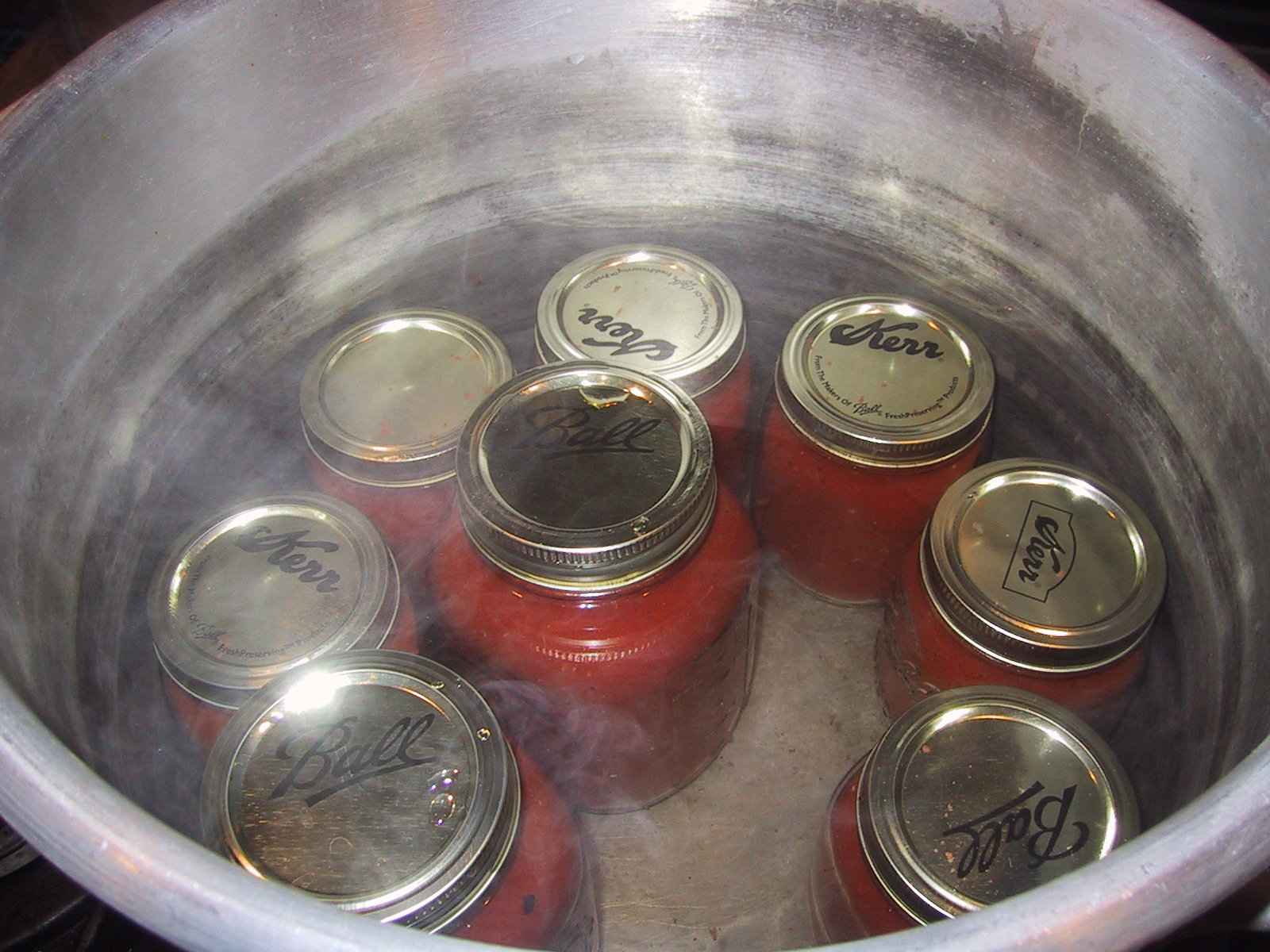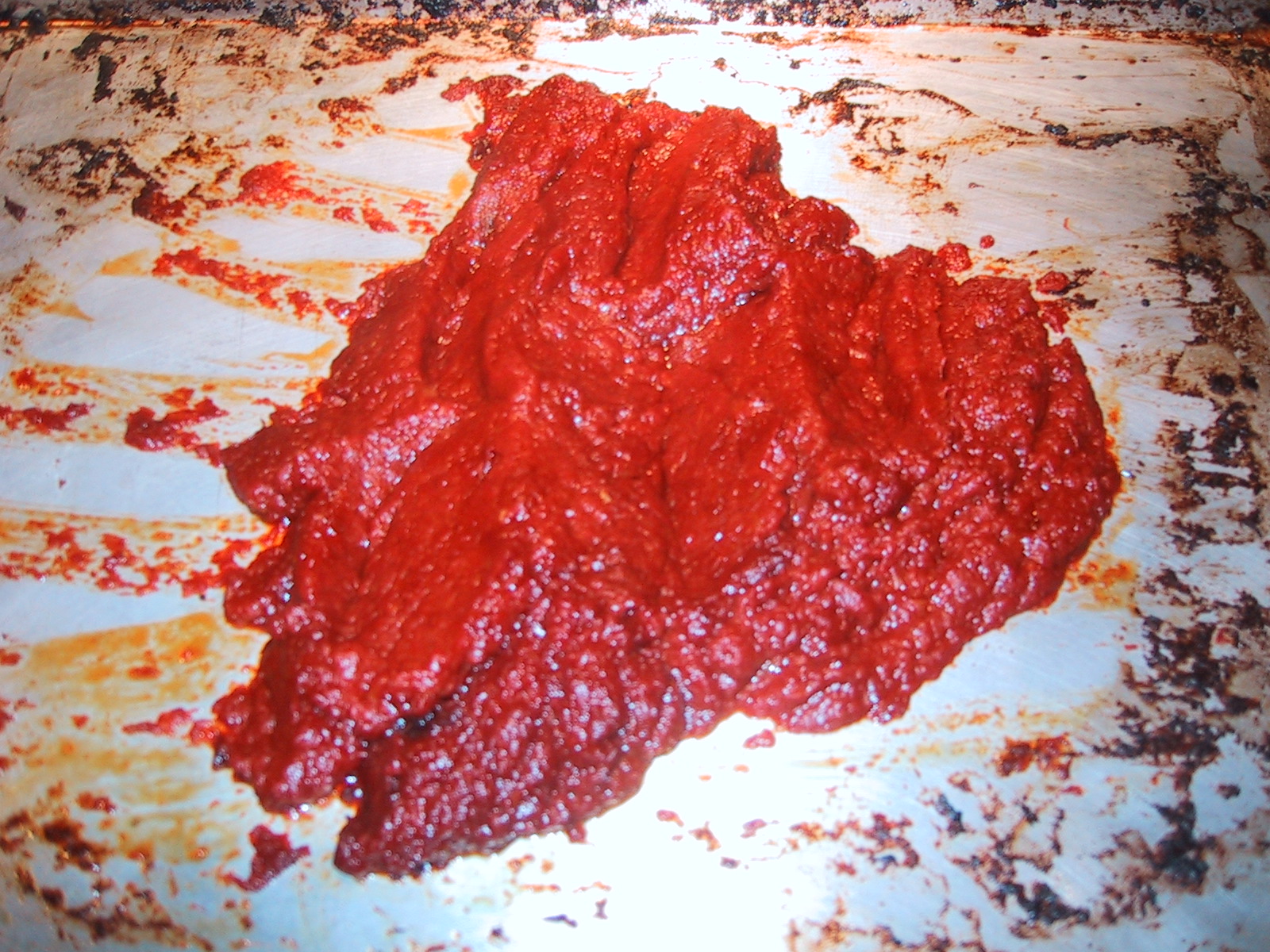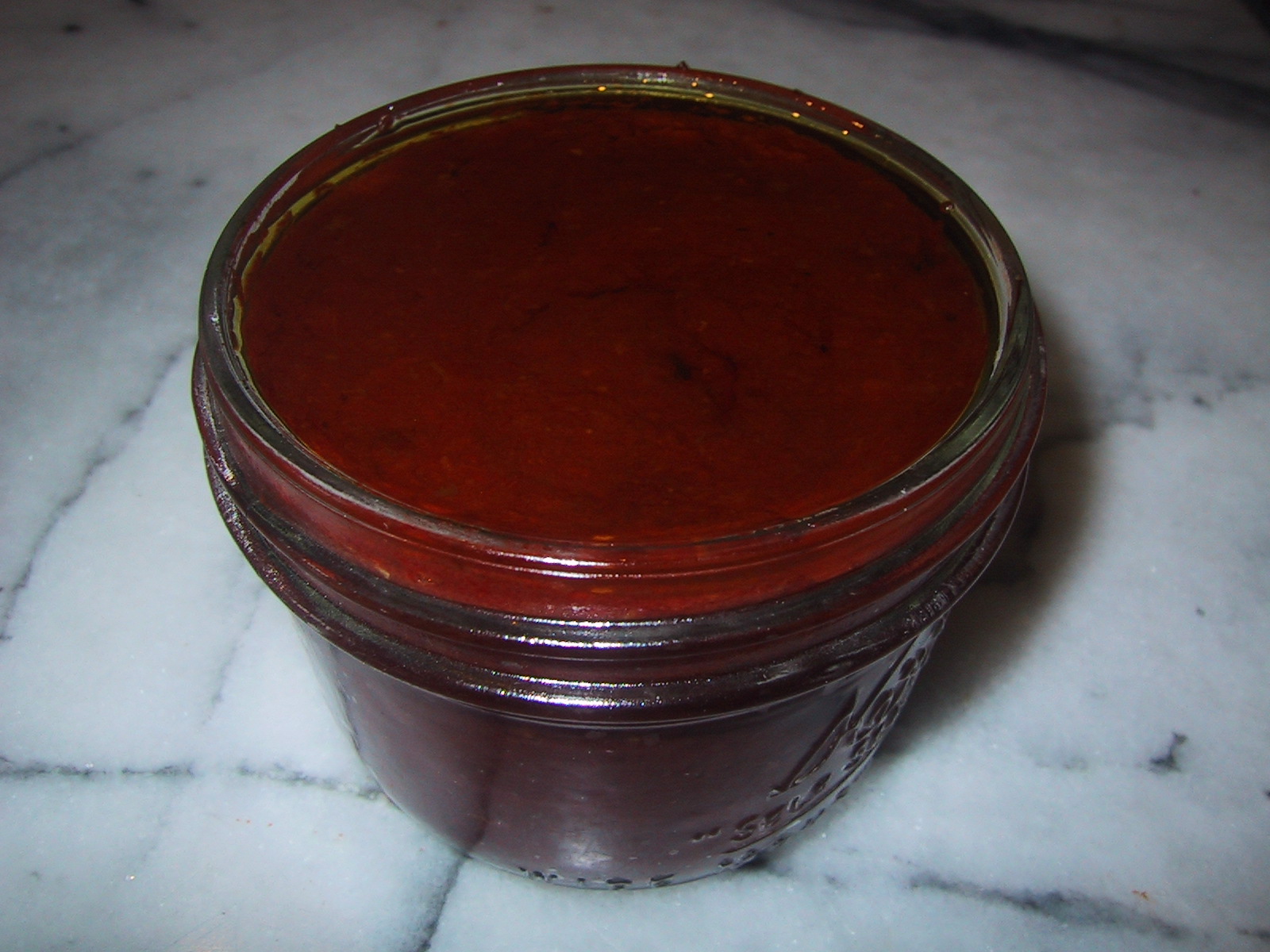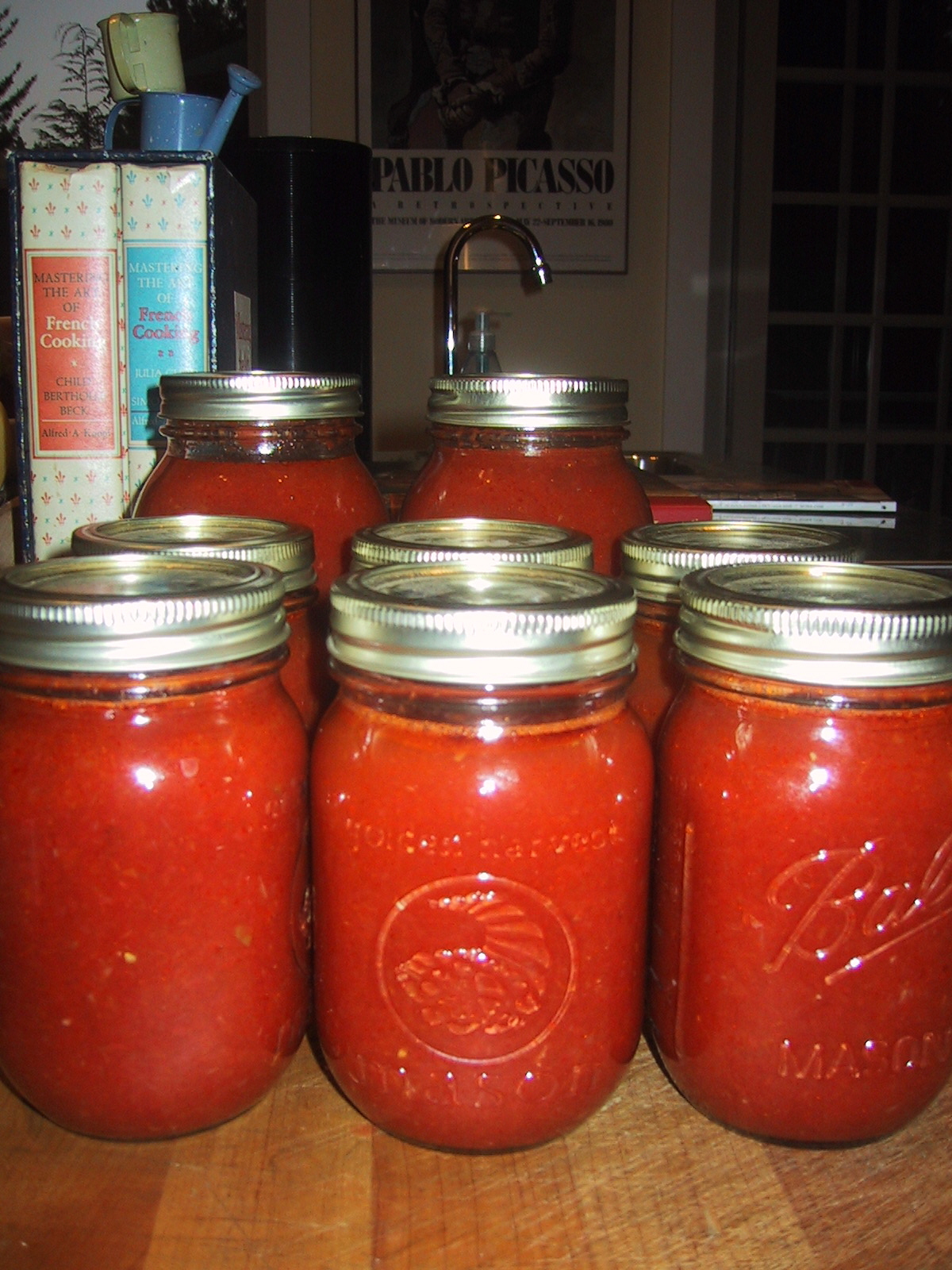
One of my favorite late summer chores is filling the pantry and freezer with menu basics made from summer’s fabulous produce. Every year, I make and freeze pesto, roasted gypsy peppers and chicken stock made from all of the summer’s chickens roasted on my Weber grill. In addition, I buy a case of my favorite San Marzano tomatoes from one of our farmers’ market vendors, turning them into row after row of gleaming jars of deep red tomato sauce. This tradition was passed on to me via my mother and her mother before her, allowing the most fleeting taste of summer, fresh tomatoes, to season many a winter meal.
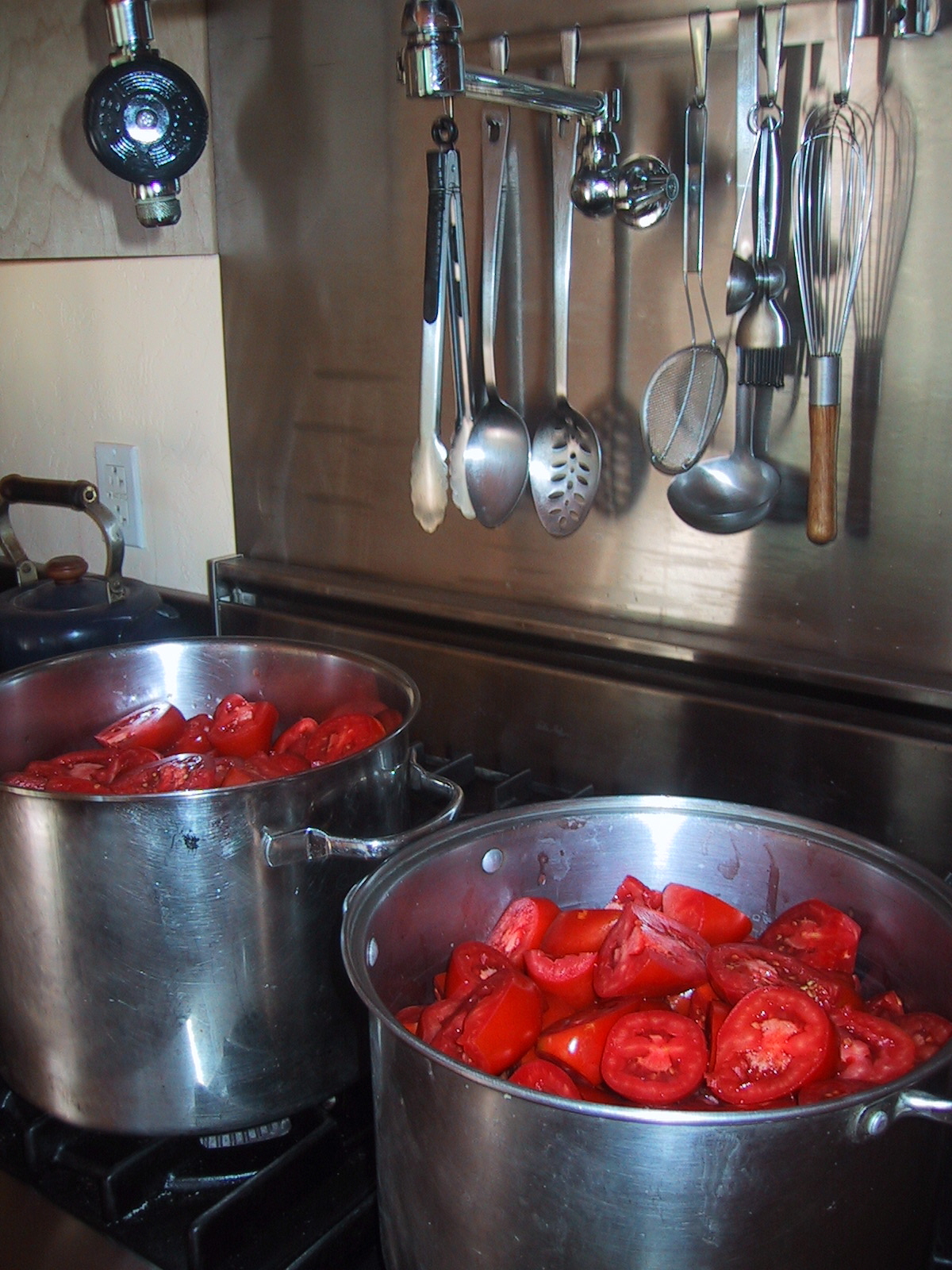
I begin by rinsing and sorting the tomatoes; then chunk them up into walnut sized pieces, trimming away any soft or green spots. This year, they fill two stockpots almost to the top. I toss in some chopped onion, celery and a grated carrot, plus salt, herbs, and two bay leaves in each pot. Set over medium heat, the tomatoes begin to render their juices, hissing and popping with wisps of steam rising up into the vent hood. While I wait for them to boil, I take down and rinse the bright red plastic tomato mill, purchased in Italy. This labor saving device allows me to cook down the tomatoes, skins, seeds and all, extracting every bit of flavor before straining out the unwanted portions.
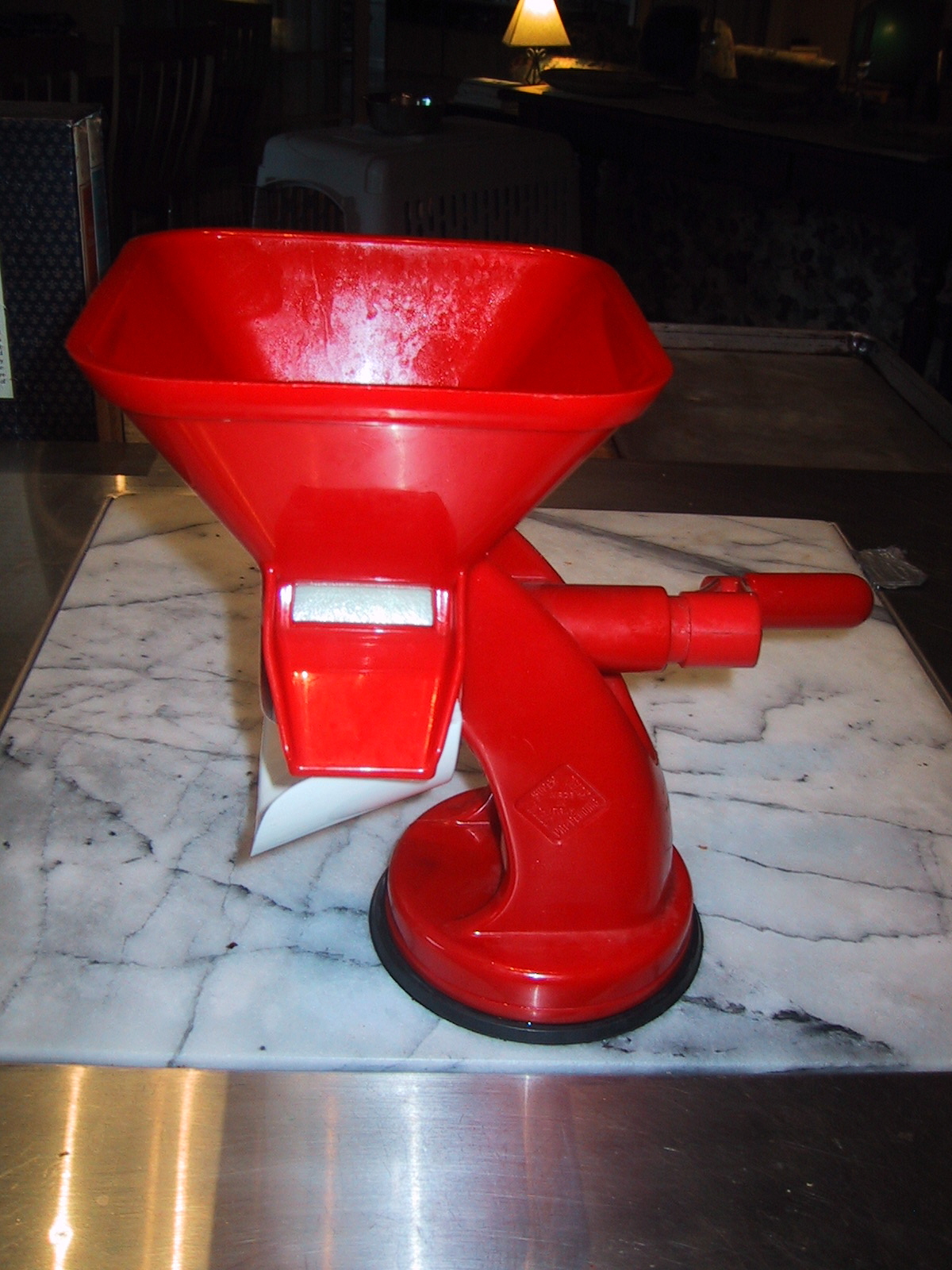
After the tomatoes have cooked down and thickened, and the seasonings melted into the pots, I pull then off the heat and allow them to cool slightly before setting up the mill. I also turn the oven on at 300F, as I am planning on reducing some of the finished sauce to paste, called estratto (extract) in Sicily, or doppio (doubled) in Tuscany.
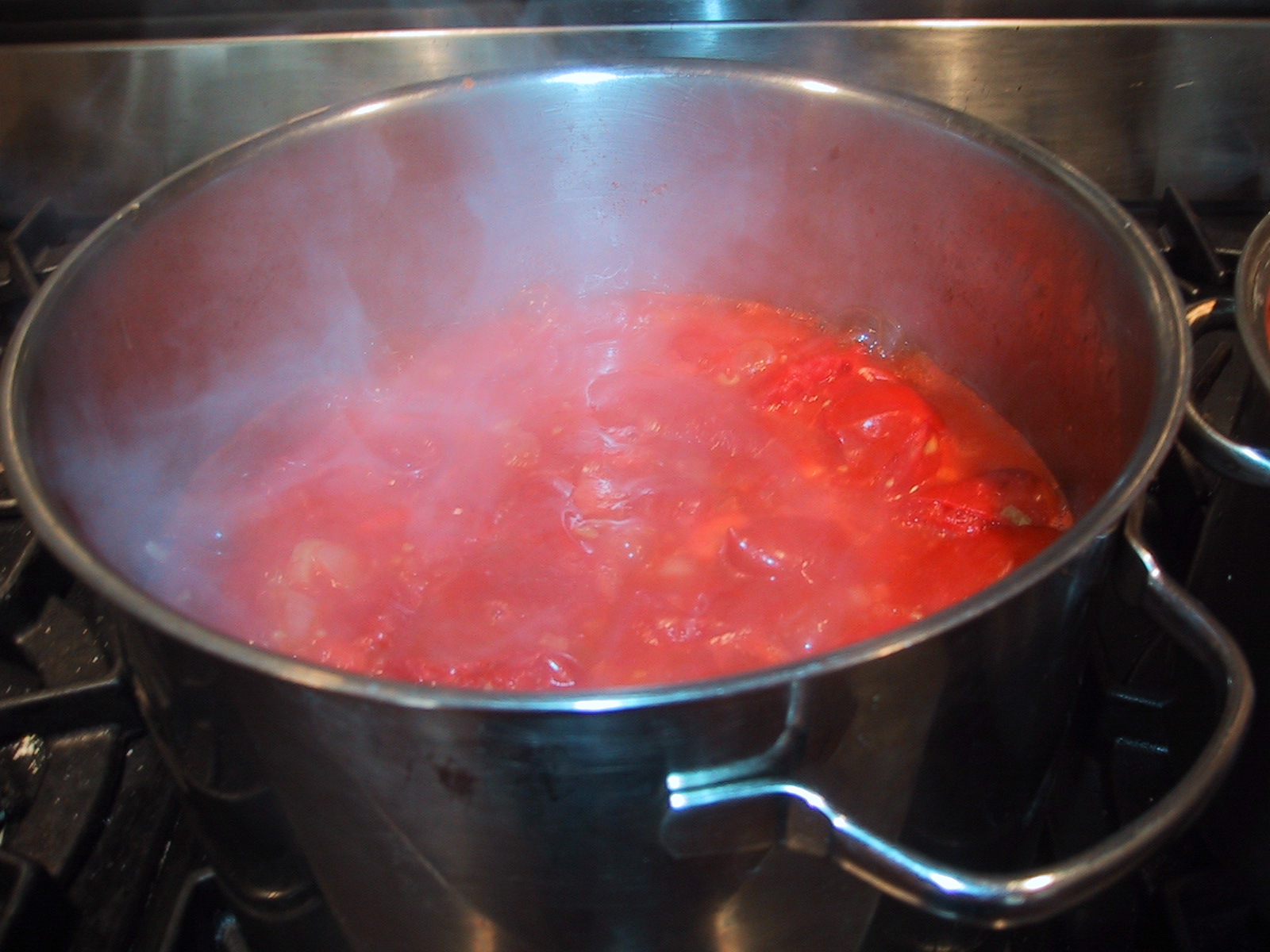
The tomatoes are run through the mill once, producing a ruby red puree. I run the seeds, skins and remaining pulp through one more time, to extract the last bit from the inedible remainder. This fibrous paste is added to the compost bin, eventually returning to the soil from which it came. I reheat the puree and taste for salt while sterilizing the quart and pint mason jars in the dishwasher, using the sanitizer cycle. A new box of lids is opened, and the lids and rings are set to simmer in water on a back burner. The teapot sings merrily as water is boiled and tipped into the hot jars, which are arrayed on a sheet pan opposite the stove. I generously coat another sheet pan with our own olive oil, and carefully ladle about three cups of puree into it, tapping the pan on the counter to evenly spread the sauce. This is popped into the oven to begin its long reduction and caramelization process.
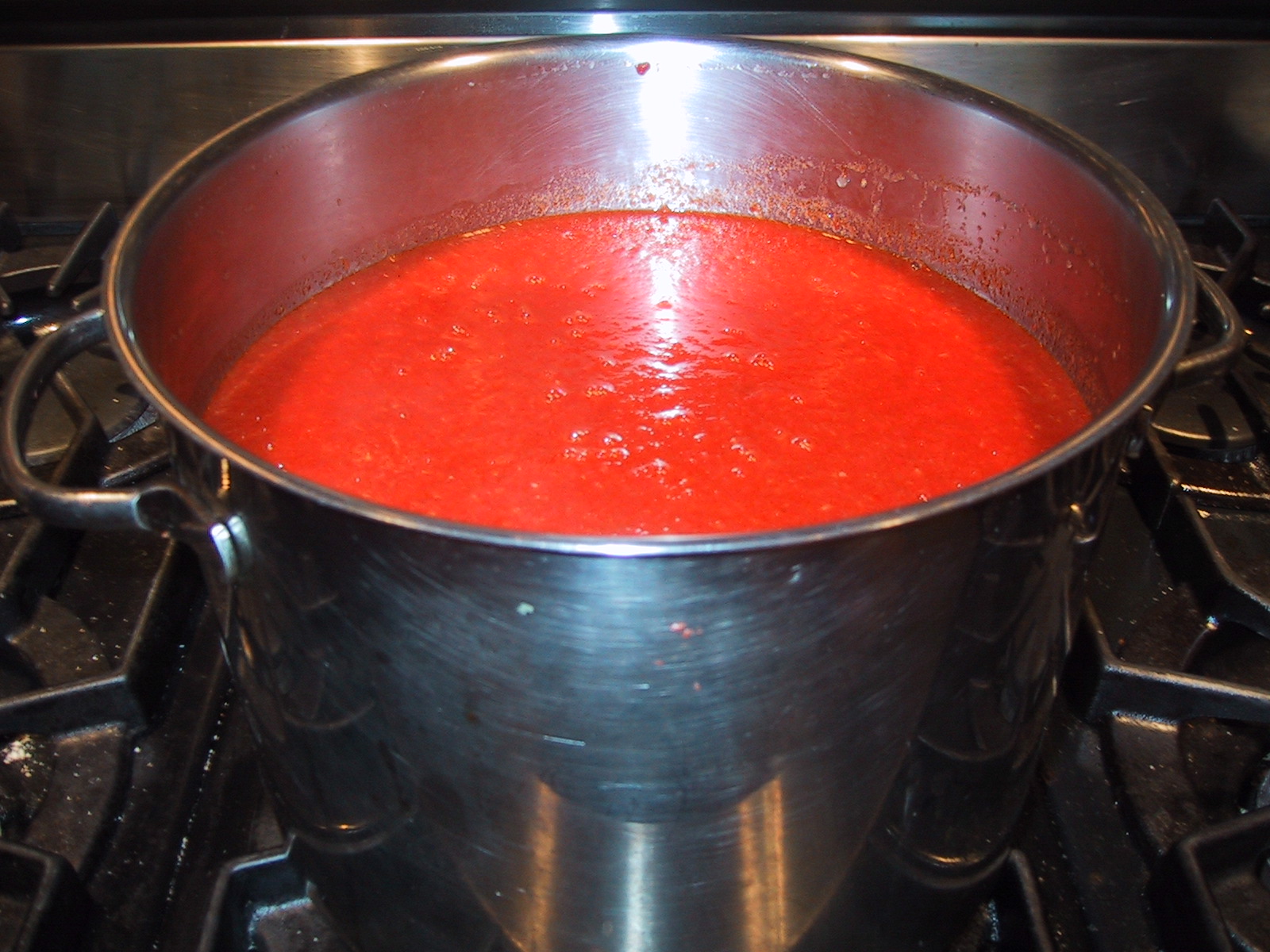
When the sauce is simmering briskly, I take the ladle, and in turn, tip the hot water out of the jars and into the canning kettle, filling each jar with sauce as I go. The hot lids are set carefully down over the mouth of each jar and the rings are screwed on gently to hold them in place. The rest of the boiling water is poured in over the jars to the depth of several inches over the tops of the tallest ones. The kettle is then place over high heat, and timed fifteen minutes from a full boil. When finished, the hot jars are lifted out and place on a towel to cool, the lids sealing with a musical ping. When completely cooled, the rings are screwed tight and the jars are wiped down.
Meanwhile, I have removed the pan of puree from the oven several times, stirring gently to ensure even cooking. After several hours, the oven is turned down to its lowest setting, and the thick paste is left to slowly dry.
In the morning, I stir the paste and taste it, the sweet fruitiness is backed by a slight undertone of bitterness. It is a deep brick red and sticky as I spoon it into a half pint jar and top it with a layer of our olive oil to keep out the air. Rather than processing, it will be stored in the refrigerator, a new layer of oil added after each use. The essence of tomatoes to be added, a spoonful at a time, to future soups and sauces, without a hint of the metallic flavor that characterizes commercial canned tomato paste.
This is hot work, often performed in the heat of our Indian summer, but this year, a lingering and cool fog whose cool breezes seep in through the screen door to the kitchen. The entire house smells of tomatoes, and the full jars seem to smile at me from their shelf. The mill is put away for another year, and we bid summer a fond farewell.




